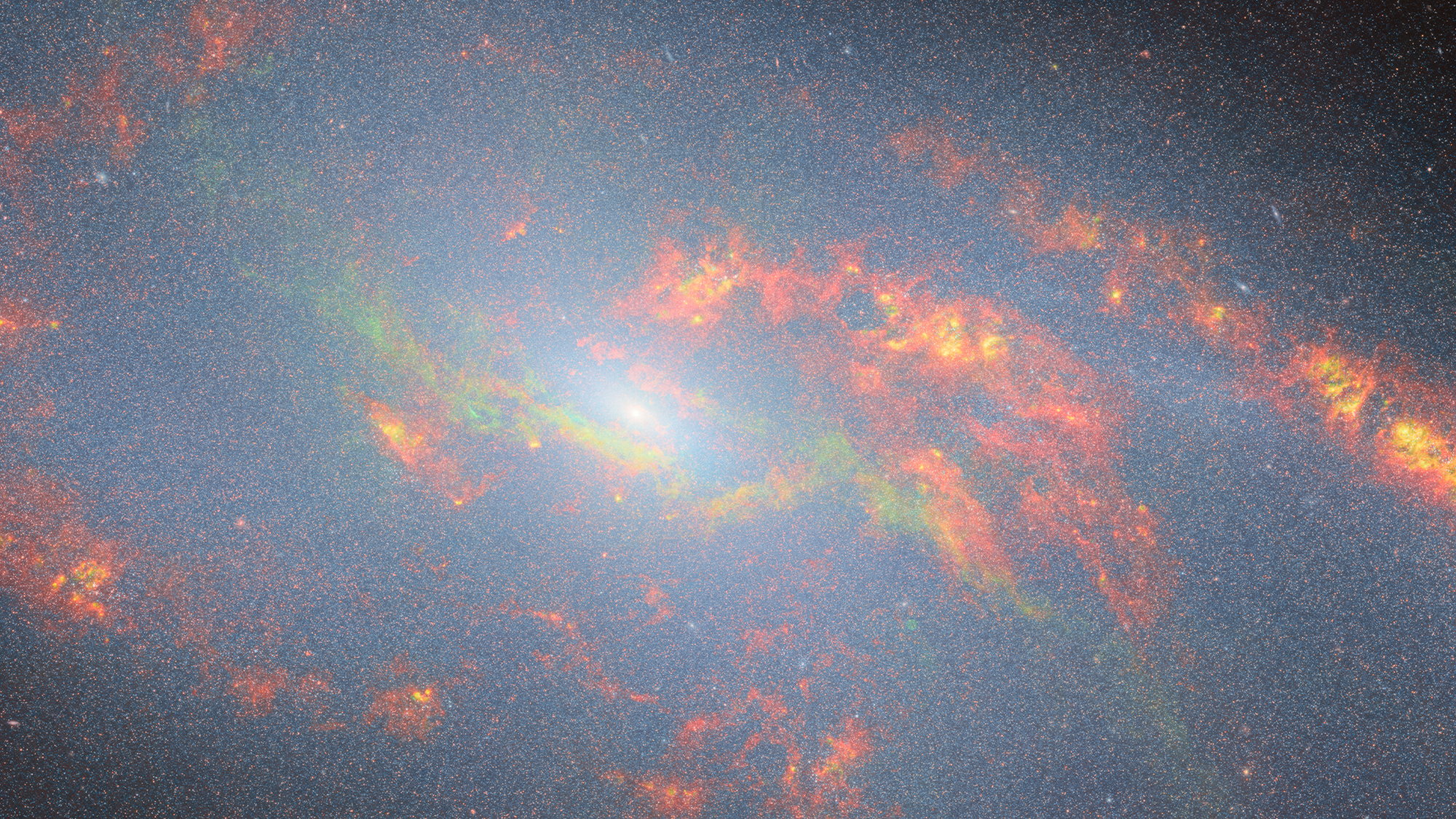Spiral galaxy Messier 106–also known as NGC 4258–is the star of a new image taken with the James Webb Space Telescope (JWST). Known for its galactic pyrotechnics, this swirling galaxy is about 23 million light-years away in the constellation Canes Venatici.
By space standards, it is practically one of Earth’s neighbors. In addition to being so close to our own spiral Milky Way galaxy, it is also one of the brightest. Two supernovae have been detected in this galaxy in 1981 and 2014.
[Related: JWST images show off the swirling arms of 19 spiral galaxies.]
Most spiral galaxies have a supermassive black hole lurking at its center. Messier 106 is no exception, and boasts a particularly active central black hole that is actively gobbling up material. As this gas spirals towards the black hole, it heats up and ejects powerful radiation. By comparison, the black hole at the center of the Milky Way galaxy only occasionally pulls in wisps of gas.
Astronomers captured this image using the JWST’s Near-InfraRed Camera (NIRCam). It was taken as part of a dedicated program to study Messier 106’s active galactic nucleus. This bright central region of the galaxy is dominated by the light emitted by dust and gas as it is falling into the black hole. One of the first images from JWST was of the galaxy collection Stephan’s Quintet, which features the active galaxy NGC 7319.
In the new image, the blue regions show the stellar distribution throughout the central region of Messier 106. The orange regions depict warmer dust, with the stronger red hues representing the colder dust. The teal, green, and yellow tones near the center of the image show varying gas distributions throughout the region.

According to the European Space Agency (ESA), the galaxy also has another remarkable feature–two ‘anomalous’ extra arms that are visible in radio and X-ray wavelengths, instead of in the visible spectrum of light.
“Unlike the normal arms, these are composed of hot gas instead of stars. Astronomers believe these extra arms result from the black hole’s activity, a feedback effect seen in other galaxies as well,” the ESA wrote in a statement. “They are likely caused by outflowing material produced by the violent churning of gas around the black hole, creating a phenomenon analogous to a wave crashing up out of the ocean when it hits a rock near the shore.”
[Related: Elliptical galaxies may just be spiral galaxies with their arms lobbed off.]
While the galaxy bears the name of renowned 18th century astronomer Charles Messier, it was never observed by him. It was discovered by his assistant Pierre Méchain, but never cataloged in Messier’s lifetime. Along with six other objects discovered but not logged by this duo, Messier 106 was posthumously added to the Messier catalog in the 20th century.
In 2023, Messier 87, became the first black hole image sharpened with AI and the telescope also took stellar images of the “buff” whirlpool galaxy Messier 51.

